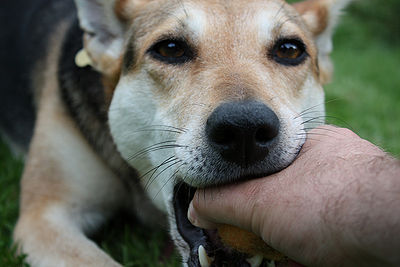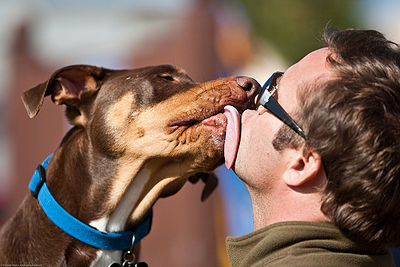
Dogs are limited physically, using only their bodies and mouths to play. Besides using their mouths when playing with other dogs, they sometimes growl or bark. While it may look terrifying to us, it’s usually just play. But it is important to keep watch to make sure the play doesn’t escalate into real aggression.
Dogs that stare at one another or bare their teeth angrily need to be stopped. Playful dogs usually “bow,” and blink their eyes, an invitation to another dog to join in the fun.
If I feel that my dogs are becoming a little too rambunctious, I clap my hands and loudly say “uh, uh” and it works.
You don’t want this mouthing behavior transferred to you (or another human). Since it’s natural for dogs to use their mouths to play, it’s up to us to teach them that this is not appropriate behavior with humans.
Puppies learn from their mothers how much mouth pressure is acceptable when they are 6-8 weeks old. Their littermates will cry out if the pressure causes pain. Pups that are taken from the litter before this sage need us to teach them.
Dogs use their mouths to nuzzle our hands – after all, we use our hands to pet them, give them toys and feed them.
When your dog attempts to mouth you – your hand or any other part of you – cry out in pain, even if it doesn’t hurt, then calmly say something like “No Mouth”. You will be emulating mother dog and other littermates. It may take a number of attempts for your dog to associate your pain and cry with his/her mouthing. But be consistent to avoid confusing your dog.
After you’ve used the “no mouth”command, offer your dog a toy to play with, preferably tossing it so that the toy lands a short distance away from you. This will discourage your pup from getting hold of your shoe or laces or any part of you. And of course, offer lots of praise when the dog gets it right.


